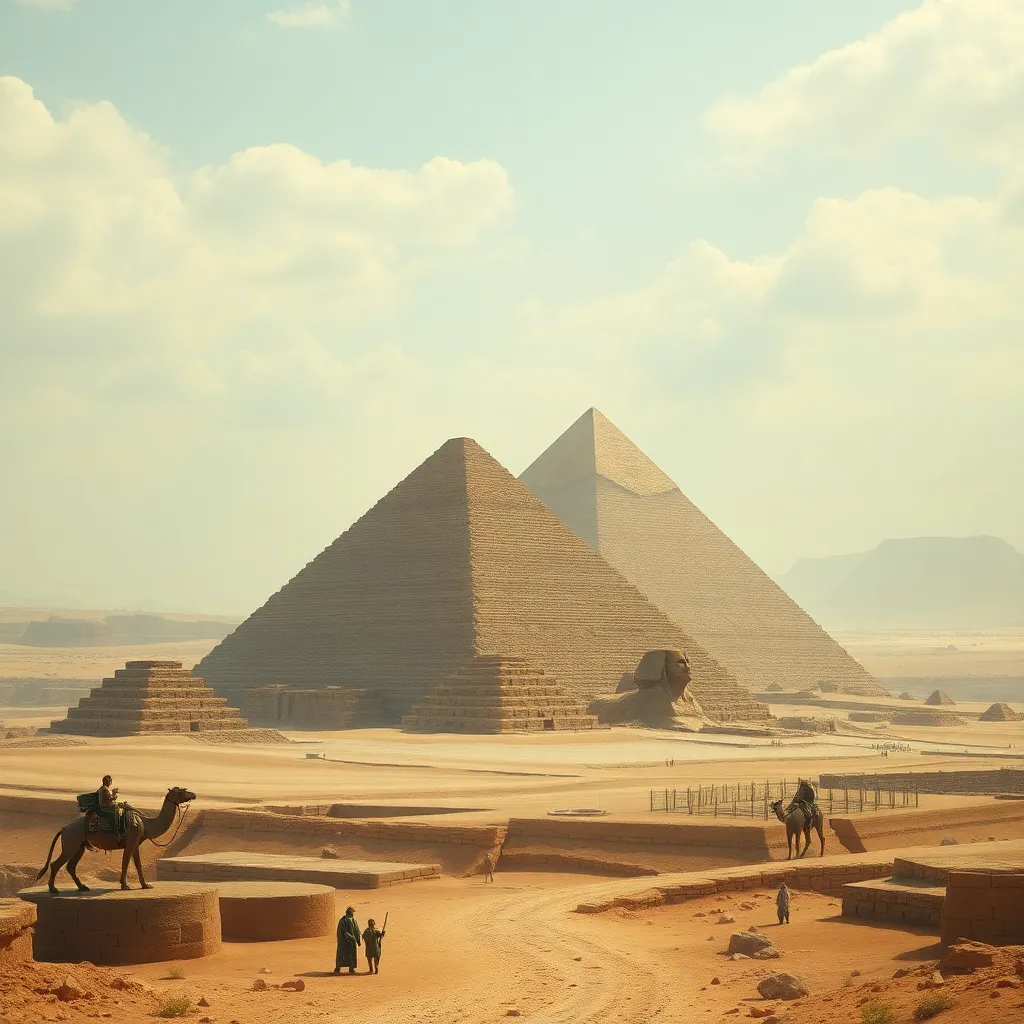The Pyramids and Their Connection to the Afterlife
I. Introduction
The pyramids of ancient Egypt stand as monumental testaments to the civilization’s architectural prowess and profound spiritual beliefs. These grand structures not only served as tombs for pharaohs but also embodied the Egyptians’ complex understanding of life, death, and the afterlife. The pyramids were constructed with a purpose that transcended mere burial; they were designed to facilitate the transition of the soul into the afterlife, reflecting the ancient Egyptians’ belief in immortality.
This article aims to explore the intricate connection between the pyramids and the concept of the afterlife in ancient Egyptian culture, delving into historical contexts, architectural features, burial practices, and the rich mythology that surrounded these iconic structures.
II. Historical Context of Pyramid Construction
The construction of the pyramids spans several dynasties of ancient Egypt, primarily during the Old and Middle Kingdom periods. Here’s a brief timeline highlighting key points:
- Third Dynasty (c. 2670-2610 BCE): The Step Pyramid of Djoser at Saqqara, designed by architect Imhotep, marks the earliest monumental stone structure.
- Fourth Dynasty (c. 2610-2490 BCE): The construction of the Great Pyramid of Giza by Pharaoh Khufu, along with the pyramids of Khafre and Menkaure.
- Fifth and Sixth Dynasties (c. 2490-2181 BCE): The development of pyramid construction continued, with a focus on smaller, less monumental structures.
Key pharaohs associated with major pyramids include:
- Khufu: Builder of the Great Pyramid, the largest of the three pyramids at Giza.
- Khafre: Known for the second pyramid at Giza and the Great Sphinx.
- Menkaure: The builder of the smallest of the three pyramids at Giza.
These pyramids not only showcased the pharaohs’ wealth and power but also represented their divine connection to the gods, reinforcing the belief that the pharaohs were intermediaries between the gods and the people.
III. Architectural Features Symbolizing the Afterlife
The architectural design of the pyramids was deeply imbued with religious significance. Key design elements include:
- Shape: The pyramid shape is believed to represent the rays of the sun, symbolizing the pharaoh’s ascent to the heavens.
- Orientation: Pyramids were typically oriented to the cardinal points, aligning with celestial bodies, particularly the North Star, which was associated with the afterlife.
- Interior Structure: Complex burial chambers and passageways were designed to protect the deceased and their belongings from tomb robbers.
Inside the pyramids, hieroglyphs and inscriptions related to afterlife beliefs were found. These inscriptions often included spells and prayers intended to assist the deceased in their journey through the underworld.
IV. The Pyramid as a Tomb: Burial Practices
Burial practices in ancient Egypt were elaborate, especially for pharaohs and elite individuals. The pyramids served as grand tombs that reflected these practices:
- Sarcophagi: Pharaohs were placed in intricately designed sarcophagi, made from expensive materials like granite or alabaster.
- Treasures and Offerings: The burial chambers contained treasures, food, and other offerings intended to sustain the deceased in the afterlife.
- Protective Measures: The pyramids were equipped with traps and false passages to deter grave robbers.
The pyramid was seen as a means to ensure safe passage to the afterlife, where the pharaoh would be reborn and join the gods in eternal life.
V. The Pyramid Texts: Inscribed Messages for the Dead
The Pyramid Texts are among the oldest religious writings in the world, inscribed on the walls of the burial chambers of the pyramids. Their historical significance includes:
- Spiritual Guidance: The texts provided guidance and spells for the deceased, ensuring their successful journey through the afterlife.
- Key Themes: Major themes include resurrection, immortality, and the pharaoh’s divine nature.
- Purpose: These inscriptions served as a form of communication with the gods, intended to aid the deceased in navigating the challenges of the afterlife.
VI. The Afterlife Journey: Myths and Beliefs
The ancient Egyptians held a rich set of beliefs regarding the afterlife, which shaped their rituals and monumental architecture. Key aspects include:
- Views on the Afterlife: The afterlife was seen as a continuation of life on earth, where the soul would live eternally in a paradise known as the Field of Reeds.
- The Soul’s Journey: The journey of the soul involved navigating the underworld, facing various challenges before reaching the afterlife.
- Weighing of the Heart: A pivotal ceremony where the heart of the deceased was weighed against the feather of Ma’at, the goddess of truth. A balanced outcome meant eternal life, while an unbalanced outcome led to destruction.
VII. Archaeological Discoveries and Insights
Recent archaeological discoveries have continued to enhance our understanding of the pyramids and their connections to the afterlife:
- New Tombs and Artifacts: Excavations have uncovered previously hidden burial sites and artifacts that reveal more about burial practices.
- Interpretations: Egyptologists have provided insights into the symbolism and functionality of the pyramids, linking them more closely to religious beliefs.
- Technology’s Role: Advances in technology, such as ground-penetrating radar, have allowed researchers to discover hidden chambers and better understand the pyramids’ internal structures.
VIII. Conclusion
The pyramids of ancient Egypt were much more than mere tombs; they were intricately designed structures that served as gateways to the afterlife. Their architectural grandeur, combined with the rich tapestry of beliefs surrounding death and resurrection, highlights their significance in ancient Egyptian culture. As we reflect on the enduring legacy of the pyramids, it becomes clear that they continue to captivate our imagination and offer insights into a civilization that revered life, death, and the mysteries beyond.
Preserving this historical connection is vital for future generations, ensuring that the lessons and legacies of ancient Egypt remain alive in our collective consciousness.




